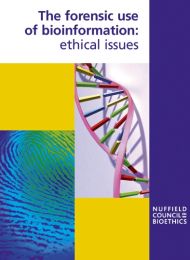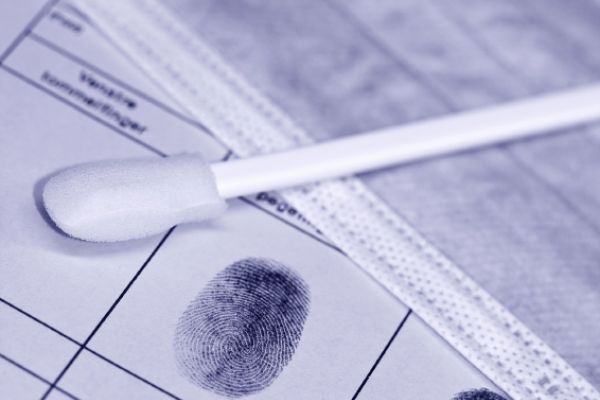The forensic use of bioinformation: ethical issues
Report
Published 19/09/2007

The Police and Criminal Evidence Act 1984 states that police bioinformation databases may only be used for:
- the prevention or detection of crime
- the investigation of an offence
- the conduct of a prosecution
- identifying a deceased person or a body part
However, these terms have been widely interpreted and the uses to which the National DNA Database is put have expanded to include searching for family relatives in the investigation of crime, predicting the ethnic appearance of a suspect, and carrying out research to aid crime detection.
Familial searching
When DNA collected at a crime scene does not exactly match any profile on the Database, it is possible to search for genetic relatives to help track down the perpetrator. Many possible relatives can be found, and the process may reveal previously unknown family relationships.
We conclude
Familial searching should not be used unless it is justified in each specific case. Clear public guidelines on the use of familial searching must be introduced, and these should contain safeguards to protect against any possible intrusion into family privacy.
Inferring ethnicity
When a person is arrested in England and Wales, as well as having a DNA sample taken, they are routinely assigned to one of seven ethnic appearance categories by the arresting officers. Using this information, research has been carried out on links between DNA and ethnic appearance. As a result, forensic analysts can now suggest the likely ethnic group of a person whose DNA has been collected from a crime scene. The police may use this to narrow down their pool of suspects. However, the practice of assigning a ‘racial type’ to individuals is subjective and inconsistent. Also genetic research does not support the idea that humans can be classified by appearance into a limited number of ‘races’.
We conclude
Ethnic inferences should not be routinely sought, and where they are used they should be treated with great caution.
Research using the National DNA Database
DNA profiles on the National DNA Database and stored biological samples can be used for research in relation to the prevention and detection of crime. The Database Strategy Board decides whether proposed research projects may take place. By the end of 2006, 33 research requests had been made, of which 19 were approved.
We conclude
Any research proposals should be subjected to close ethical review, making it more similar to the practice for reviewing medical research. In addition, details about research using the DNA Database should be published regularly, including who is undertaking the research and exactly what the purpose of the research is.

Share